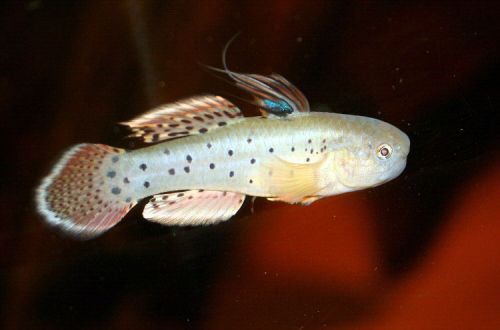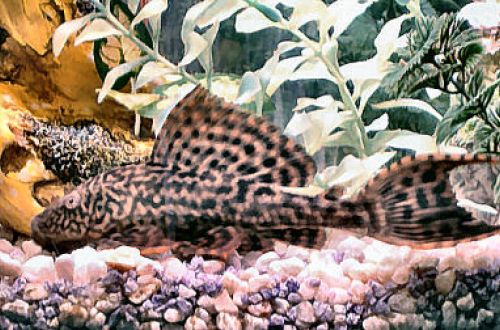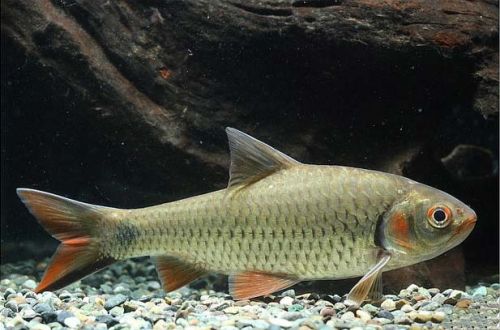
Spotted goby
Fish Spotted Goby or Knight Goby, scientific name Stigmatogobius sadanundio, belongs to the Gobiidae family. It is considered difficult to maintain due to the need for brackish conditions and the difficulty of selecting compatible species. The fish has a complex disposition, but this is precisely what attracts many aquarists. In addition, she has an original appearance, which adds to her sympathy.

Contents
Habitat
Widely distributed throughout Southeast Asia, India and Pakistan. It lives in the deltas of rivers flowing into the Indian Ocean, numerous coastal lakes and backwaters with brackish water. Often found upstream in fresh waters.
Brief information:
- The volume of the aquarium – from 70 liters.
- Temperature – 20-26°C
- Value pH — 7.0–8.5
- Water hardness – medium hardness (10-20 dGH)
- Substrate type – sandy
- Lighting – subdued
- Brackish water – yes, at a concentration of 8 grams. per 1 liter
- Water movement – light or moderate
- The size of the fish is up to 9 cm.
- Food – any food
- Temperament – territorial, quarrelsome
- Content alone or in a group
Description
Adult individuals reach a length of up to 9 cm. Sexual dimorphism is weakly expressed. Males are somewhat larger and have a higher dorsal fin, silvery in color. Females, respectively, are smaller, there are yellow shades in the color. Black speckles are present in the body pattern of both sexes.
The name “Goby-Knight”, the fish received due to the shape of the dorsal fin, resembling a banner at the end of a knight’s spear, and the steel color of the body is similar to armor. He supplemented this image and militant behavior, more on that below.
Food
Omnivorous species. In a home aquarium, it will accept dry, frozen and live food. The daily diet may consist of flakes or granules in combination with bloodworms, brine shrimp. Although the fish can be content with exclusively dry food.
Maintenance and care, arrangement of the aquarium
The optimal size of the aquarium for one or two fish starts from 70 liters. The design uses a sandy substrate and numerous shelters in the form of snags, caves, grottoes. It is desirable to bring their number to the number of fish, so that each has its own secluded place. The presence of plants is welcome, but they must undergo adaptation to brackish conditions. It is noted that the fish prefer dim lighting, becoming more mobile and spending less time in their shelters.
The spotted goby is able to live in both fresh and brackish water, but the latter is more preferable. The salt concentration should not exceed a quarter of the sea, that is, about 8 grams. for 1 liter of water.
Successful management is directly dependent on maintaining high water quality. Having a productive filtration system is a must. When choosing, consider that the filter is suitable for brackish conditions. Also of key importance is the weekly replacement of part of the water with fresh water and regular cleaning of the aquarium from organic waste.
Behavior and Compatibility
Territorial and not too friendly looking. The Knight Goby can attack very small fish, and will also not be the best neighbor for fish with long veil fins. Good compatibility is achieved with species of comparable size living in the middle or upper water layers, such as Spatterfish, Rainbowfish, Green and Orange Chromids and others that can tolerate brackish conditions.
Gobies will compete with each other for territory, which is why it is necessary to provide a sufficient number of shelters if you plan to keep several of them.
Breeding / breeding
In nature, spawning of goby fish occurs with the onset of the rainy season. After a long courtship by the male, the female lays several hundred eggs in a cave or other hiding place. The male takes care of the laying. It protects future offspring throughout the entire incubation period. When the fry begin to swim freely and leave their spawning area, the parental instincts of the male weaken.





